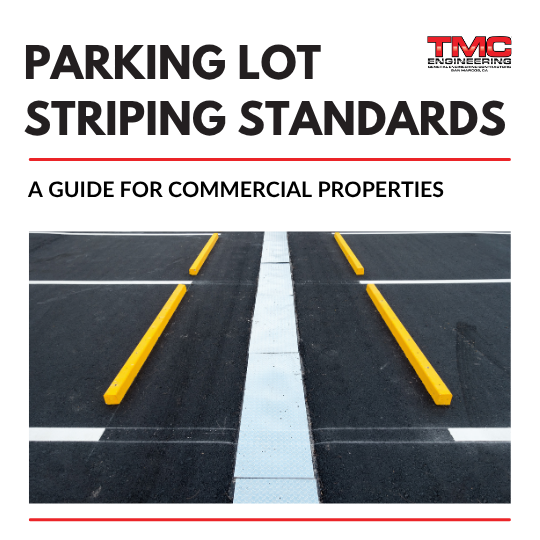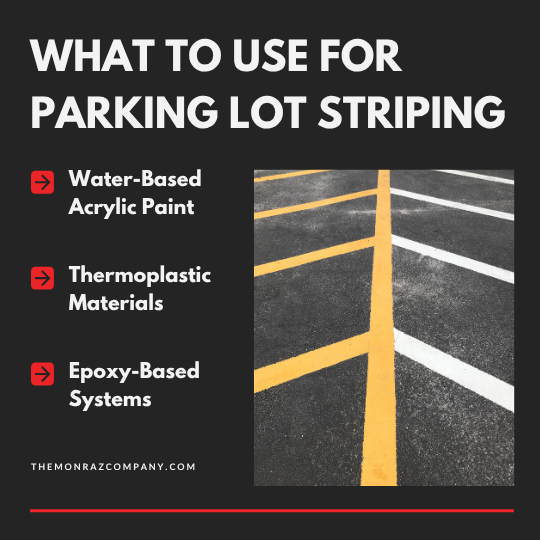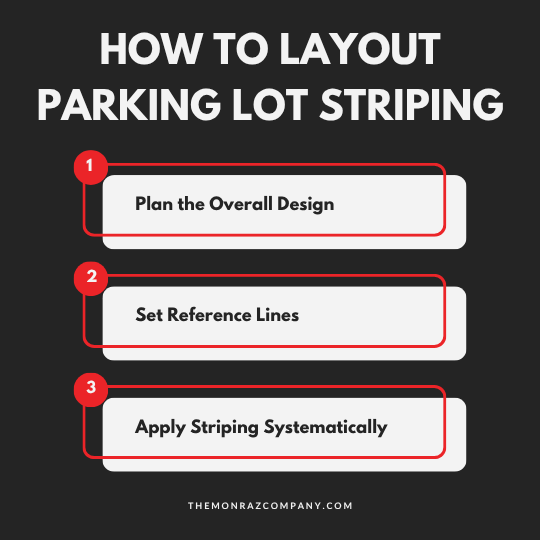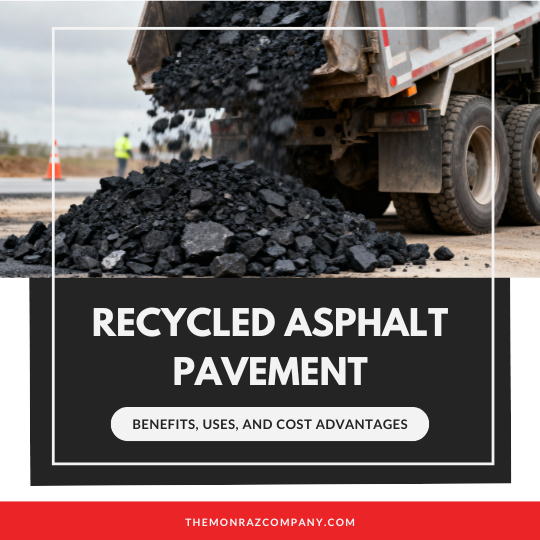Parking Lot Striping Standards: Best Practices for Busy Lots
Parking lot striping remains one of the efficient methods of managing commercial properties in California. It helps to maximize parking space and ensures traffic is managed properly around the facility. Proper parking lot striping also reduces liability risks and gives a good first impression to customers.
To maximize these benefits, parking lot striping must comply with local regulations and accessibility codes. That’s why today, we will be outlining some of the requirements and expected standards so you know what to expect. We also discuss why these standards are essential, and what tools should be used in the process.
If you’d like a quicker or more specific answer to your parking lot striping inquiries, the experts at
TMC
Engineering would be happy to assist you. Our goal is to provide reliable, efficient solutions for all your commercial construction needs throughout Southern California. Our team of experts is ready to guide you through any and all concrete or asphalt needs.

Parking Lot Striping Standards: What You Need to Know
This post covers all you need to know about parking lot striping standards for commercial properties. Specifically, we will look at standard parking space dimensions, measurements for different striping elements, and accessibility requirements for ADA. Afterwards, we will look at the materials needed for parking lot striping and the process for applying it.
These standards will help you make informed decisions about facility remodels or new construction projects. It will also help you in ensuring that new projects meet current California requirements. The regulations discussed today are comprehensive across commercial construction practices, though local authorities might have separate standards. Having seasoned professionals like
TMC Engineering on board for such projects guarantees you regulatory compliance and functional results.
Why Are Parking Lot Striping Standards Important?
Parking lot striping standards are important to commercial property owners for several reasons. To start, standard dimensions maximize space efficiency while maintaining safe maneuvering zones for vehicles. In addition, it prevents collisions between pedestrians and vehicles by clearly defining traffic flow and pedestrian space.
Americans with
Disabilities Act standards require that accessible parking spaces be included as part of your overall parking lot design. By complying with parking lot striping standards and ADA requirements, your business is effectively protected from costly legal challenges. Failure to meet these requirements can result in significant fines and required modifications.
Insurance concerns also make striping standards necessary in commercial construction. in Well-marked parking lots, reduce accident risks and liability exposure. Furthermore, insurance companies often consider parking lot maintenance and compliance when determining coverage options and premium rates for business properties.
Standard Parking Space Size
Standard parking spaces in California are typically at least 8 feet wide with a 5-foot aisle and 18 feet long for perpendicular parking arrangements. Van accessible spaces require an 8-foot width with a 9-foot accessible aisle. These spaces should also be 18 feet deep. This is applicable as long as they do not account for more than 40% of the total parking space in most locations. These dimensions conveniently accommodate standard passenger cars while also providing maximum parking capacity.
On the other hand, angled parking spaces have specific dimension considerations because of their geometric properties. For instance, 60-degree angle parking spaces will measure 8.5 feet wide by 19 feet long. Likewise, 45-degree spaces will measure 8.5 feet wide by 17.5 feet long. This way, the angle selection affects both the dimensions of each parking space and the overall driving aisle requirements.
Remember, designing a new parking lot will require careful compliance with local building codes and zoning requirements. These requirements often establish minimum parking space dimensions and may require larger spaces in some districts in California. Therefore, it is important to verify local requirements before finalizing your design to prevent costly adjustments during construction.
Parking Lot Striping Dimensions
Parking lot striping width typically measures 4 to 6 inches for standard parking space lines. This width offers visibility without breaking the bank for large parking lots. On the other hand, driving lane striping will require wider strips, often 6 to 8 inches. This way, the lines can be seen from a further distance.
Similarly, center line striping of driving aisles should be at least 4 inches wide with additional width for high-traffic areas. Double yellow center lines are 4 inches wide with 4 inches of space between them. This creates an overall width of 12 inches for the whole marking system.
Moreover, striping of crosswalks requires specific dimensional requirements for the safety of pedestrians. Standard crosswalk stripes are 12 to 24 inches wide with the same intervals between the stripes. Furthermore, the total width of the crosswalk also depends on pedestrian flow and local regulation requirements. It usually ranges from 8 to 20 feet wide.
Accessible Parking Spaces
Commercial parking lots must provide accessible parking spaces according to ADA standards and the California Accessibility Requirements. Specifically, the minimum number of accessible parking spaces depends on your total parking capacity. For instance, facilities with 1 to 25 spaces must provide a minimum of one accessible space. Comparatively, larger facilities are required to provide a greater number of accessible spaces, proportional to their total parking capacity.
In addition, accessible parking spaces benefit customers and workers with disabilities by ensuring access to the building entrance in an easy, efficient way. Therefore, ensure such parking spaces are easily recognizable through correct striping, signs, and surface markings. Moreover, businesses should ensure that the
International Symbol of Accessibility is posted on vertical signs at visible, appropriate heights.
Van-accessible spaces are a unique type of accessible parking requirement. A minimum of one space for every six accessible spaces must be van-accessible. These spaces accommodate wheelchair-accessible vans and equipment.
The specific requirements of accessible parking spots include:
- Standard accessible space must be at least 8 feet wide with a 5-foot access aisle
- Van accessible spaces require an 8-foot width with an 8-foot access aisle
- Access aisles must be marked and free from any obstruction
- Spaces must be linked to accessible pedestrian paths to building entrances
- Surfaces must be firm, stable, and slip-resistant
- There must be clear signage displaying the International Symbol of Accessibility
- Van-accessible spaces require an additional "Van Accessible" designation
- All spaces available must be positioned on the shortest available path to accessible doors
- Wider access aisles must be clearly marked to prevent unauthorized people from entering
In addition, when choosing an accessible parking space location, give special attention to the shortest accessible route to building entrances. If the building has multiple accessible entrances, the spaces must be distributed accordingly.

What to Use for Parking Lot Striping
Water-Based Acrylic Paint
Water-based acrylic paint is widely preferred for parking lot striping due to its durability, quick drying time, and environmental sustainability. Additionally, water-based formulations dry within 30 minutes under normal California weather conditions, further minimizing business interruption when applied.
Acrylic paint also offers satisfactory adhesion to
asphalt and concrete surfaces when applied properly. It is not affected by UV degradation and retains color integrity throughout its service life. As a result, properties can get 1 to 2 years of quality service before considering possible touch-ups.
Thermoplastic Materials
Thermoplastic striping materials provide higher durability and a longer lifespan for heavy-traffic business parking lots. They last for 3 to 5 years under normal usage conditions, making it cost-effective despite the higher initial cost. However, they require special equipment in addition to skilled installers for proper installation.
Furthermore, reflectivity characteristics make thermoplastic products ideal for areas that require better visibility. You can incorporate glass beads into them during application to provide enhanced night visibility and safety. The reflectivity is particularly vital for parking lots that serve evening customers or operate under low-light conditions.
Epoxy-Based Systems
Epoxy-based striping systems offer greater chemical resistance and durability for industrial parking lots. They withstand automobile fluid exposure, cleaning agents, and heavy traffic. Epoxy systems also work exceptionally well for facilities serving commercial vehicles or industrial applications requiring wider aisles.
Though application complexity is greater with epoxy systems, long-term performance provides an attractive package for buildings requiring low maintenance. The materials tend to provide 3 to 5 years of service with good retention in appearance.

How to Layout Parking Lot Striping
Plan the Overall Design
Begin the parking lot layout by monitoring traffic patterns and identifying principal entrance and exit points. Also, consider how employees and customers move through your facility during peak periods. This will help you set optimal locations for driving lanes and parking space layouts to minimize congestion.
Furthermore, calculate total parking requirements based on building occupancy, regional zoning codes, and estimated peak usage. Make sure you include any required accessible spaces, loading zones, and fire lane clearances in your initial estimates. These requirements affect total layout efficiency and must be included in the design process from the beginning.
Set Reference Lines
Create primary reference lines using surveying equipment or professional layout tools to ensure accuracy throughout the striping process. The reference lines form the foundation for all subsequent measurements and provide even spacing across large parking lots. Without fail, setting proper reference lines prevents cumulative measurement errors that could affect the whole operation.
Additionally, mark significant reference points with permanent markers or spray paint that will be visible even while striping. Also make sure to install driving lane centerlines, parking row positions, and accessibility feature markings. These points serve as a guide for striping crews and ensure uniform application according to your designated layout plan.
Apply Striping Systematically
Begin striping application with driving lane line markings and notable traffic control elements. These first markings provide the guideline for every parking space and allow for proper alignment throughout the project. Work methodically from major elements to secondary details to ensure consistency and accuracy.
Additionally, apply parking lot striping to maintain quality control and prevent application errors. Complete an entire row of parking before moving to other nearby areas to ensure uniform appearance and spacing.
Parking lot striping standards help to ensure functional and compliant parking facilities.
Understanding parking lot striping regulations enables California commercial business owners to create functional and compliant parking lots. The regulations ensure safety, accessibility, and optimal space utilization while shielding your business from regulatory compliance issues and costly fees. In addition, an accessible design allows any number of people to visit your property with little to no concern.
For more information about concrete materials and maintenance, check out our related articles, “Concrete Slab Foundation Repair” and “Parking Lot Sealing and Striping”. For more information on how to deal with other issues with concrete, you can also visit
our
blog.
At
TMCEngineering, our main priority isn’t just completing a job—it’s also about exceeding expectations. Through
safety, quality workmanship, and client satisfaction, we guarantee that every project will meet quality standards and local California requirements. Whether it’s
asphalt paving,
striping, sealing, or
concrete work, our
team of experts is here to help you understand the process.
Contactustoday to discuss your needs and receive a customized proposal. We’re committed to building lasting partnerships by delivering quality-driven solutions.




